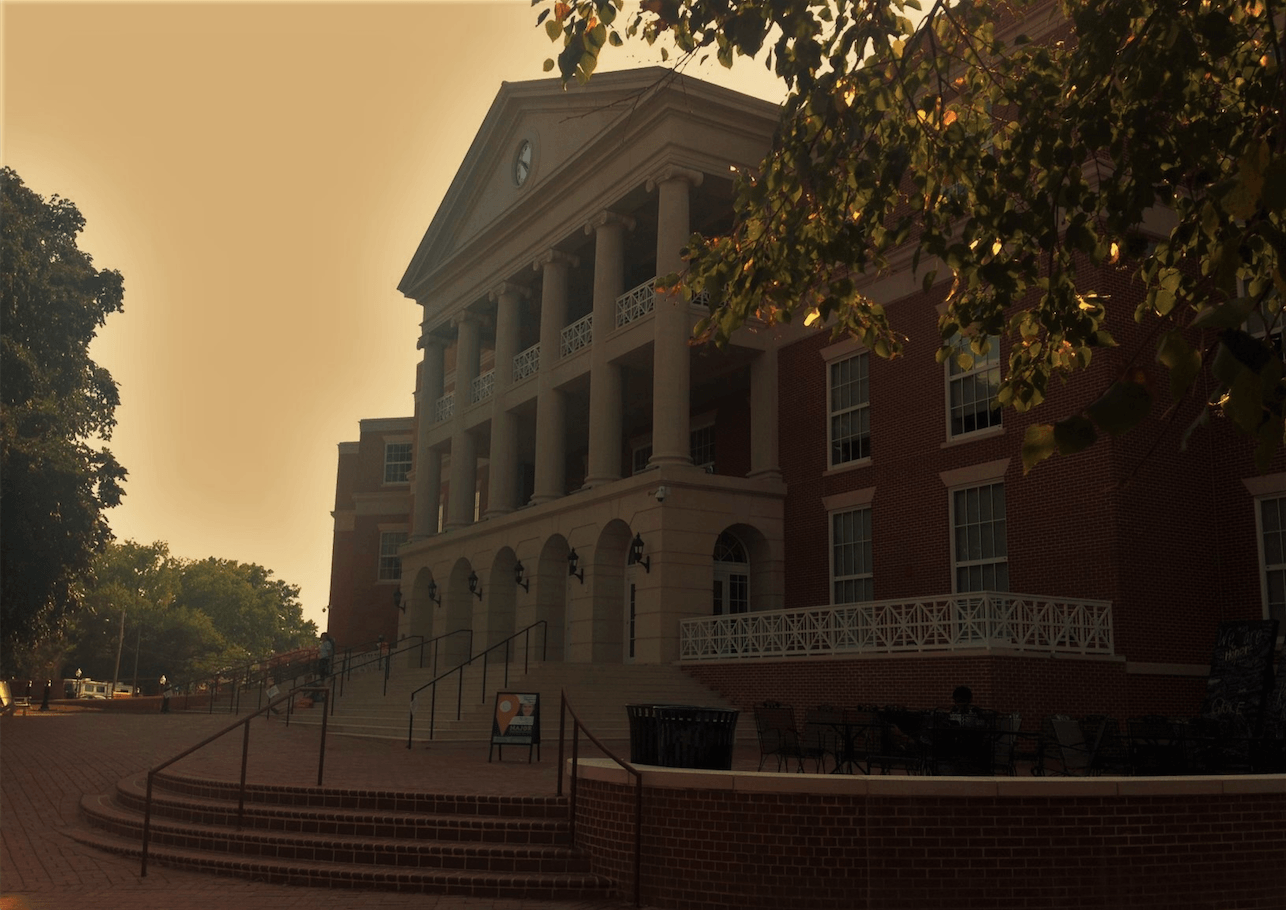A closer look at disability accessibility for UMW campus
3 min read
Dahlia Somers / The Blue & Gray Press
By ANDREW UNGER
University of Mary Washington students have many different takes on the University Center, from the new dining options to the studying corners. However, something that most students might not think about is the new accessibility options that it provides. Before the University Center opened, most dining services were provided in Seacobeck Hall.
This building was largely inaccessible to disabled students, as the only way for people in wheelchairs to get into the building was through the College Avenue entrance. Part of the reason for this was because Seacobeck Hall is 84 years old and was built in 1930 when the Americans with Disabilities Act (ADA) had not been created.
So does the UC provide improvements for disabled students where Seacobeck did not?
According to freshman Ren Salman, it has.
The wheelchair ramp, for instance, is clearly visible in front of the building for students living on campus and there is a parking lot behind the building with easy access to the elevators.
The only problem, according to Salman, is that the way to the elevator is not commonly known, and so could prove to be a problem for people who do not know where they were going. While the UC has improved the resources available for students with disabilities, there are other problems around campus that have not been resolved.
According to commuter transfer student Chloe Rippel, a freshman and disability advocate, there are only a few disability parking spaces around campus, making parking for disabled students very difficult. Rippel, who drives to the school every day, has to compete with other students and even faculty for the two parking spots near Combs, a building she spends a good deal of her time in.
In addition to their inaccessibility to Combs, both Rippel and Salman mentioned Monroe Hall as being difficult to get to.
“There isn’t a railing up to the accessible door,” Rippel mentioned. Not to mention the fact that smokers regularly hang around the entrance, and the smoke from their cigarettes could easily affect someone with hypersensitivity, such as a student with autism. “The accessible entrances are always tucked away and difficult to find. It feels like people don’t want to see us,” Salman said. “It also makes me nervous that anything could happen to me back there and nobody would see it.”
There are a few other potential problems on campus, such as the brickwork on Campus Walk, which makes manual wheelchairs hard to manage, and the absence of wheelchair accessibility to Madison Hall, the gender neutral housing option.
The Office of Disability Resources, on the fourth floor of Lee Hall, handles student concerns and goes around campus to make sure that everything is okay. According to Sandra Fritton, the director of this office, Seacobeck was up to par with old Americans with Disabilities Act standards, but not newer ones.
The University Center, however, meets current standards entirely, according to Fritton. Her office is also sponsoring Disability Awareness Month in October, which is a chance for other students to learn more about the challenges disabled students face.
Although it is important to note that most of the problems on campus are built into the architecture, as both Rippel and Salman pointed out, many buildings could only be made more accessible by extensive renovations.











